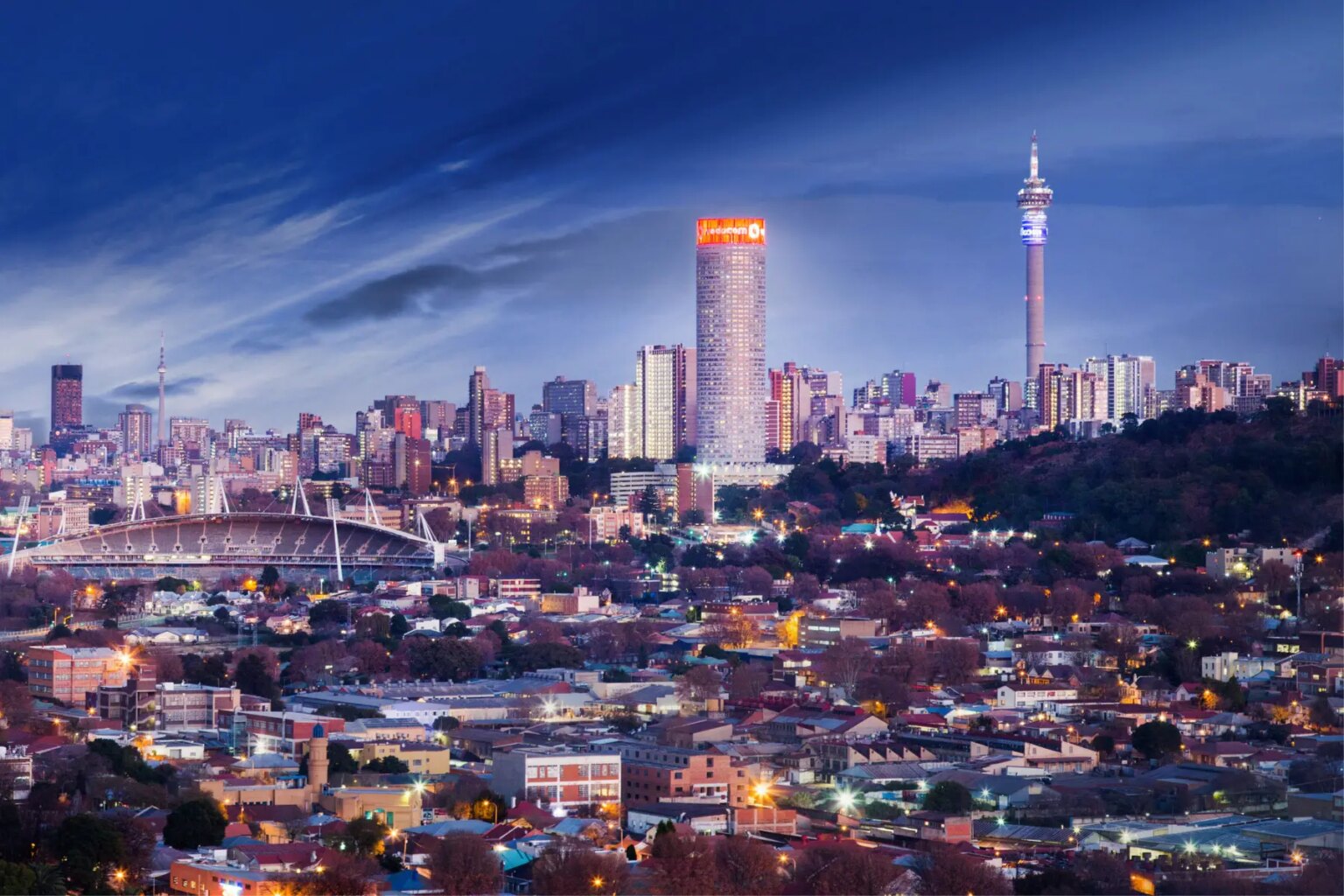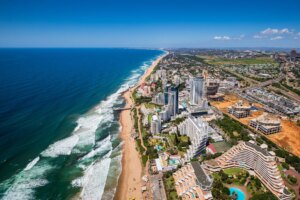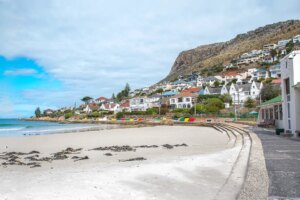Similar to Los Angeles in sprawl and sunshine, Johannesburg is the largest metropolitan area in South Africa in terms of population, economy, and size. It is a heady mixture of business buzz and laid-back poolside pleasure. However, like most places in the world, there are some pitfalls expats should be aware of. South Africa is a complex country with a tumultuous history, all of which impacts where and how people live today.
This guide outlines the main hubs of Johannesburg, and the popular areas around them, to give you an idea of where you may want to rent or buy. We cover the following topics below:
The Relocator
Moving to Johannesburg? Get there without the hassle with The Relocator. On their website, you can compare quotes from some of the world's biggest international removal firms within minutes, ensuring you find the right option for your move. Start your new life in South Africa on the right foot and compare quotes with The Relocator today.
An overview of Johannesburg
Johannesburg sits in the middle of Gauteng province in the northeast of South Africa. Locals call it eGoli (the place of gold) because it sprang up around mines tapping rich veins of the precious metal. Gold was discovered on the reef in 1886. Ever since then, Johannesburg has been a magnet for people looking to build their futures. It is also one of the largest urban forests in the world and has many parks, so you are never far from green space.
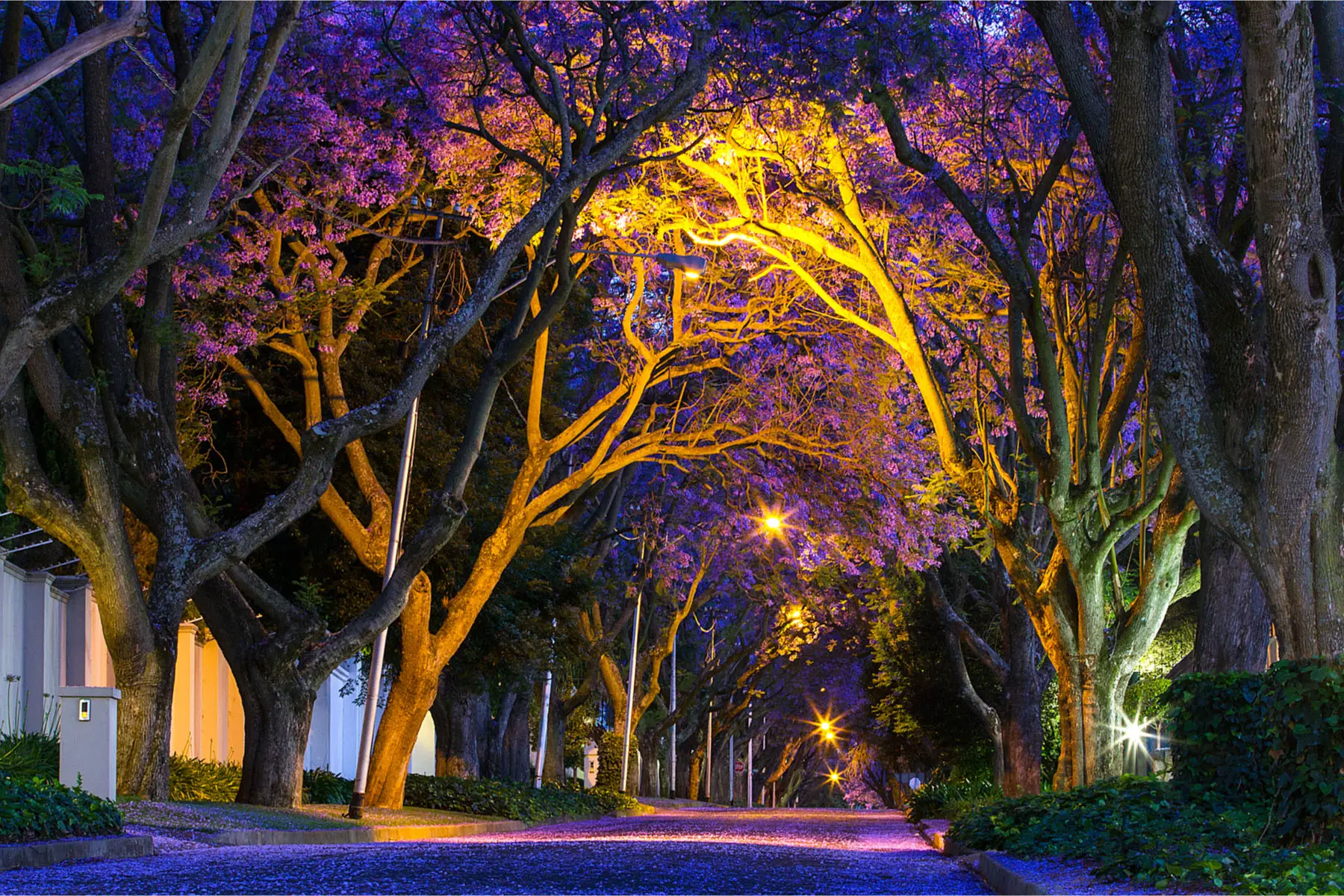
Johannesburg contributes 16% of GDP and employs 12% of South Africa’s workforce. The city is home to the highest concentration of wealth on the African Continent at US$248 billion. Additionally, more than 70% of South African companies are headquartered in the city and the Johannesburg Stock Exchange is the largest stock exchange in Africa. It is one of the top 20 stock exchanges in the world.
Society, culture, and demographics of Johannesburg
In keeping with its history, Johannesburg is a lodestone for people from within and outside of South Africa’s borders. In fact, 13.1% of the city’s population is foreign-born. Johannesburg is relatively youthful, as the majority of residents (40%) are aged 25–44 years. It is a large and cosmopolitan, or Afropolitan, city. As such, you will hear a variety of languages being spoken. Many of these languages are native to South Africa and many of them are not. Having said that, English is the language of business and, given that it is frequently a commonly understood second language, you’ll often hear it in multicultural social settings.
Johannesburg is both a business and cultural juggernaut. The city is home to some of the country’s finest art galleries, eateries, nightclubs, bars, and theaters. Trevor Noah honed his craft in its comedy clubs. It has a thriving literary scene. It is filled with an entrepreneurial spirit. You can see it in boardrooms just as much as on the streets, where vendors will be happy to sell you an assortment of goods at traffic lights.
Why Johannesburg’s size matters
You can shorten Johannesburg to Joburg, Jozi, or Joeys when talking to locals. But you can’t shorten the distances you are likely to travel in the city. The Johannesburg metro area sprawls out over 2,300 square kilometers. The city’s size means there are several hubs at every compass point from the old downtown area. The old downtown, still home to the head offices of the country’s largest mining houses and banks, suffered from neglect and decay in recent years.

As a result, newer hubs have emerged in Sandton, Rosebank, Melrose Arch, and Midrand. You should consider finding a home in the suburbs close to these major work and entertainment hubs.
Home to 5,5 million Joburgers with very few public transport options, traffic is another area in which Johannesburg looks to match Los Angeles. As a result, the choices you make about where to live (and how) have consequences. Sticking to areas near a Gautrain station could serve you well.
The commuter train offers good links to Pretoria, the capital city north of Johannesburg, as well as to the international airport to the east. The Gautrain stops at all major business and entertainment hubs and also offers a bus service with 20 routes through the city to its various stations. Many of the best places to live have easy access to Gautrain stations and arterial roads Jan Smuts Avenue and Oxford Road.
More malls than most other places
But fear not, even if you move to an area without a Gautrain station on its doorstep, you will find most facilities at a mall near you. Every area of the city has local malls with retail stores, gyms, post offices, pet stores, and more. South Africa is awash with malls. There were 2,000 of them before Covid-19 and only the US, Japan, Canada, the UK, and China have more.
Cost of living in Johannesburg
The good news is Joburg costs less to live in than its European counterparts. In addition, homes in Johannesburg are typically larger than those in Europe, with the average house sitting on land of 552 square meters. Indoor space averages 162 square meters. By comparison, only 3% of Amsterdam residents live in homes bigger than 150 square meters. Homes in Johannesburg are cheaper too. Rents in Johannesburg are 70.74% cheaper than in Amsterdam. Even if you exclude rent, living in Johannesburg is still 44.75% cheaper than living in Amsterdam.
Like other parts of the world, Joburgers felt the impact of Covid-19 on their lives and livelihoods. Before Covid, global mobility adviser Mercer ranked Johannesburg 96th out of 231 cities in its 2019 quality of life survey. Trailing the two other major South African cities, Durban (88th) and Cape Town (95th). By comparison, Los Angeles came in at 66th place in the Mercer index.
How to find housing in Johannesburg
If you are searching for a home in Johannesburg, whether to rent or buy, your best bet is the internet. Most property hunters trawl the big property portals for the latest listings. Of course, you could always engage an estate agent to help with your search. Many of the city’s major brokers are affiliated with international agencies. If you are already in Johannesburg, the biggest newspaper in town puts out a weekly property section filled with ads for houses on show. Like other places in the world, COVID-19 forced people to work from home and increased the demand for homes in Johannesburg.
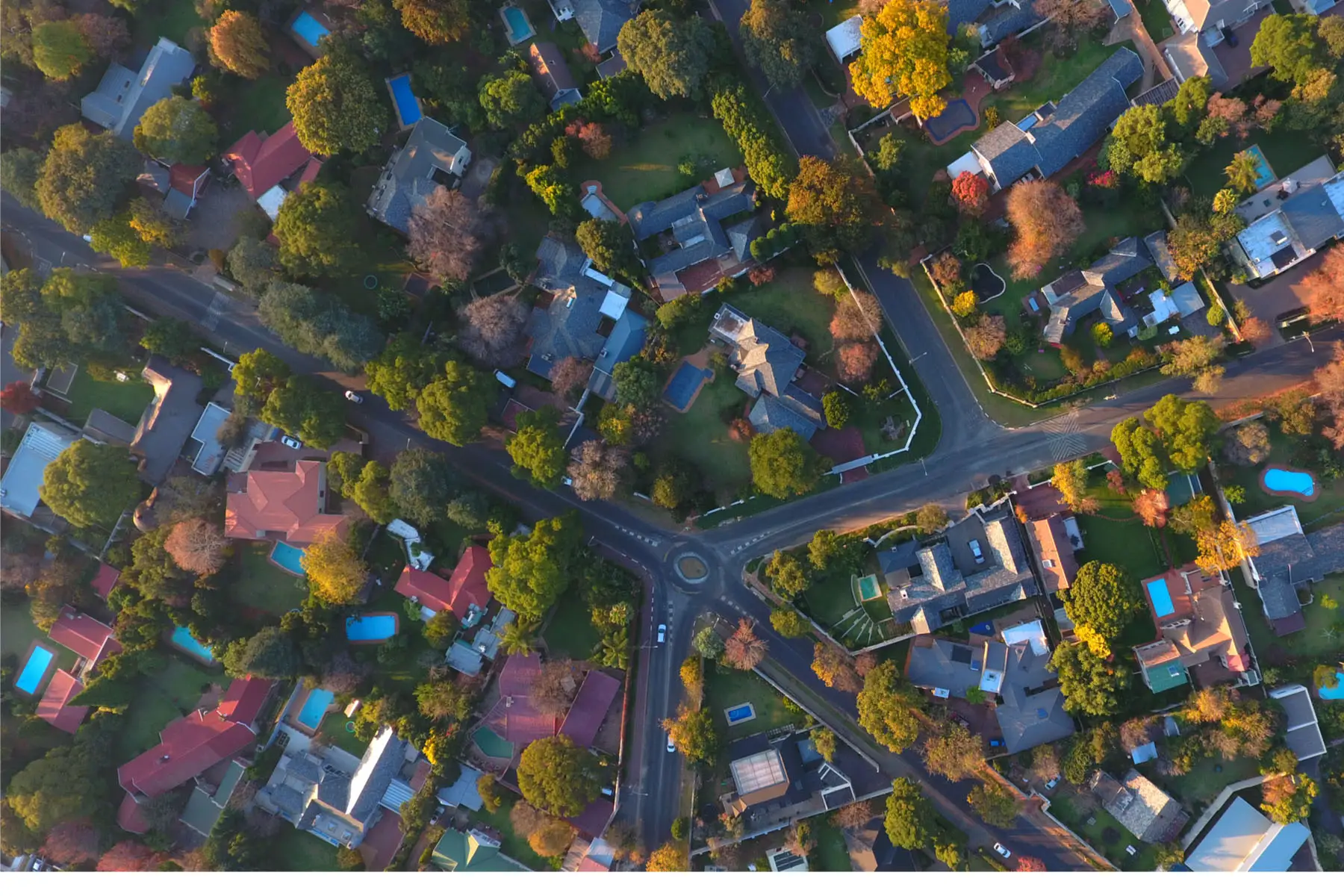
These are useful sites for finding a place to live in Johannesburg:
Types of housing in Johannesburg
South Africa has deep inequality and fairly high crime rates. As a result, the country has the second-highest number of gated communities in the world. Only the United States, with a population six times larger, has more.
As you search for your new home in Johannesburg, you might want to give some thought to the kind of place you want to live in. Personal safety ranks high in the list of factors to consider, as does commuting time. Do you want a freestanding house (which requires some extra vigilance on your part, even in suburbs with security patrols), or the lock-up and go freedom of gated estates and access-controlled apartments?
What are clusters, complexes, and estates?
Many of Johannesburg’s best areas cluster around business nodes. Speaking of clusters, you will hear locals refer to clusters, complexes, and townhouses. These are simply gated communities that offer a variety of housing options. In fact, in 2015 about 80% of homes sold were in access-controlled gated communities. Many of these include more affordable pockets of housing, even in some of the priciest neighborhoods.
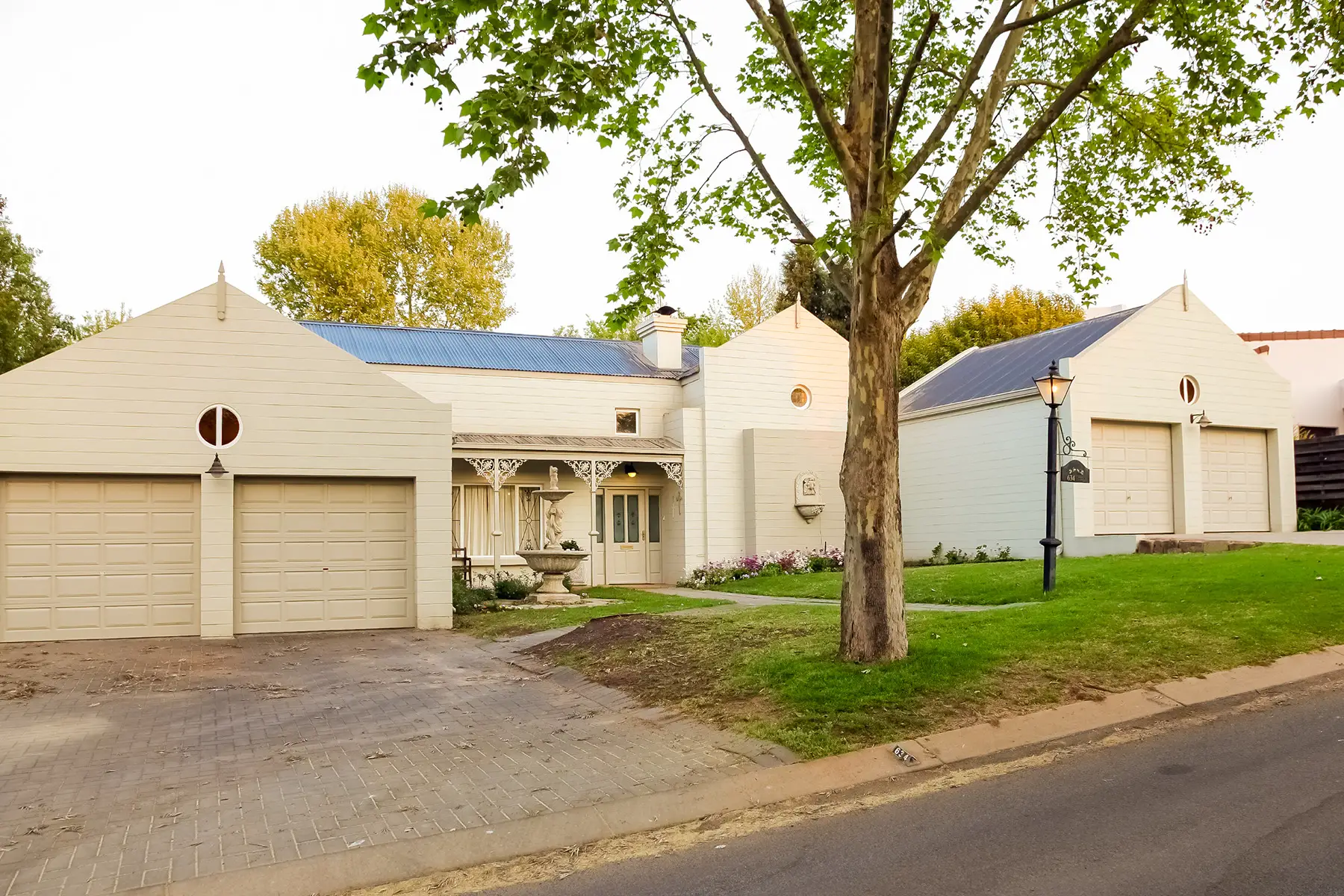
- Townhouses are homes that are attached to other homes in low-rise gated developments, they may have a garden or balcony and the complex may have some amenities.
- Clusters are free standing homes in gated developments with gardens and possibly additional communal amenities.
- Estates can have both detached and semi-detached homes as well as apartments. They always have guards looking after the safety of residents. They also have amenities like gyms, clubhouses, restaurants, swimming pools, and so on. Golf, eco, and equestrian estates are popular.
Do you want a quick commute or a big house?
Vertical living is taking off in Johannesburg. Property developers have seized on the opportunity to create mixed-use developments right in the heart of major commercial and entertainment hubs like Sandton, Rosebank, and Melrose Arch. Some of the buildings even have backup electricity and bulk water supply. They also offer a host of facilities to residents and all the nodes’ amenities are at your doorstep.
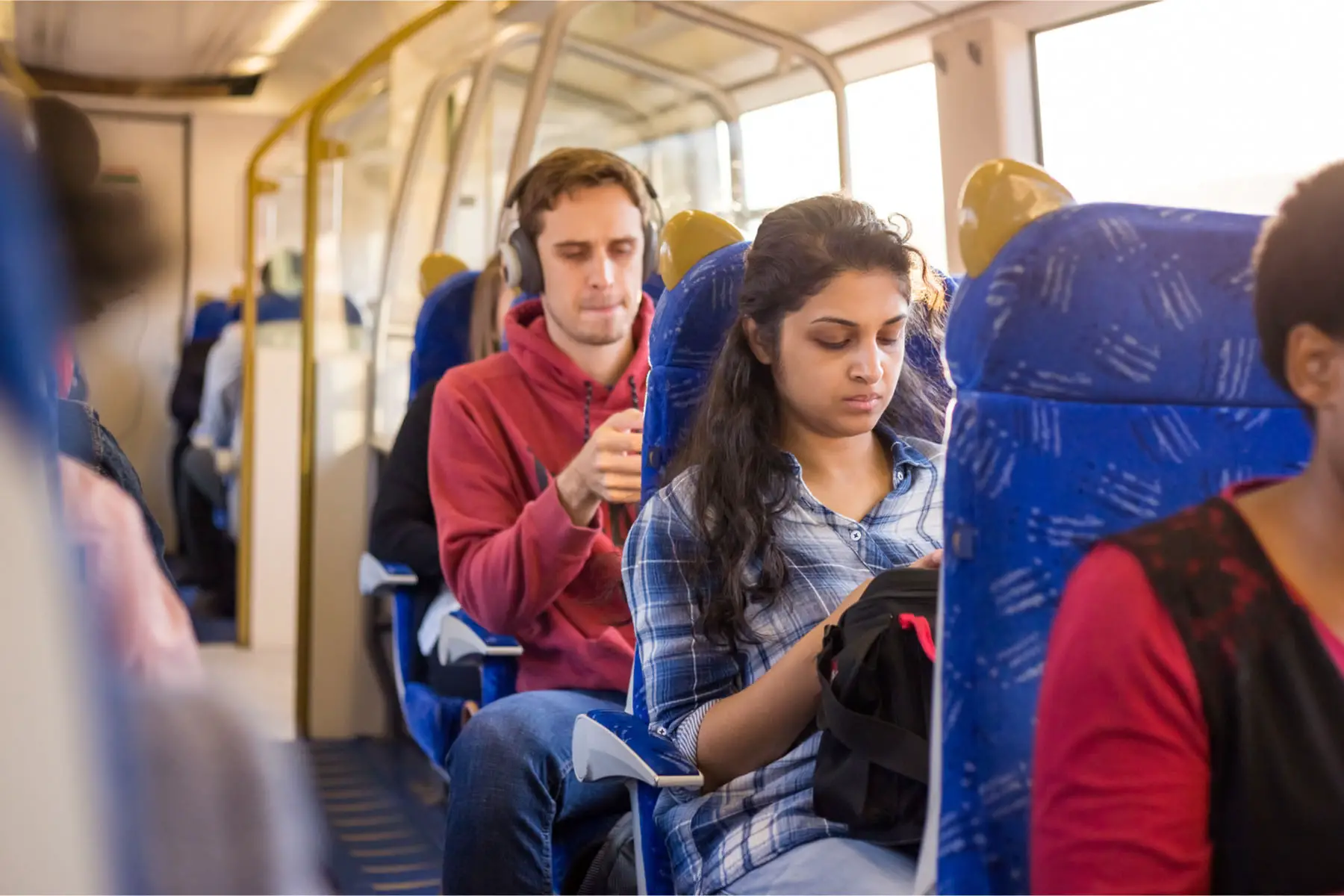
Perhaps you don’t mind a 50-minute drive if it means more space in a gated community? Then look at the newer areas of Fourways, Lonehill, Dainfern, and even Midrand further north (halfway between central Johannesburg and Pretoria).
The Sandton area of Johannesburg
Sandton is almost a city in its own right. It is now home to some of South Africa’s largest multinational companies and the JSE and Sandton City mall. The neighborhoods under the shadow of Sandton’s gleaming towers are home to executives and professionals, both local and expats. It allows some to live right next to their workplace.
Sandton’s streets teem with the monied, and those who aspire to be. Its sky is filled with cranes building places for them to live, work and play. There are plenty of expensive boutique stores, as well as more modest retail, and household stores. Sandton City and Nelson Mandela Square offer plenty of cinemas, live entertainment, a theater, and restaurants catering to every taste and budget.
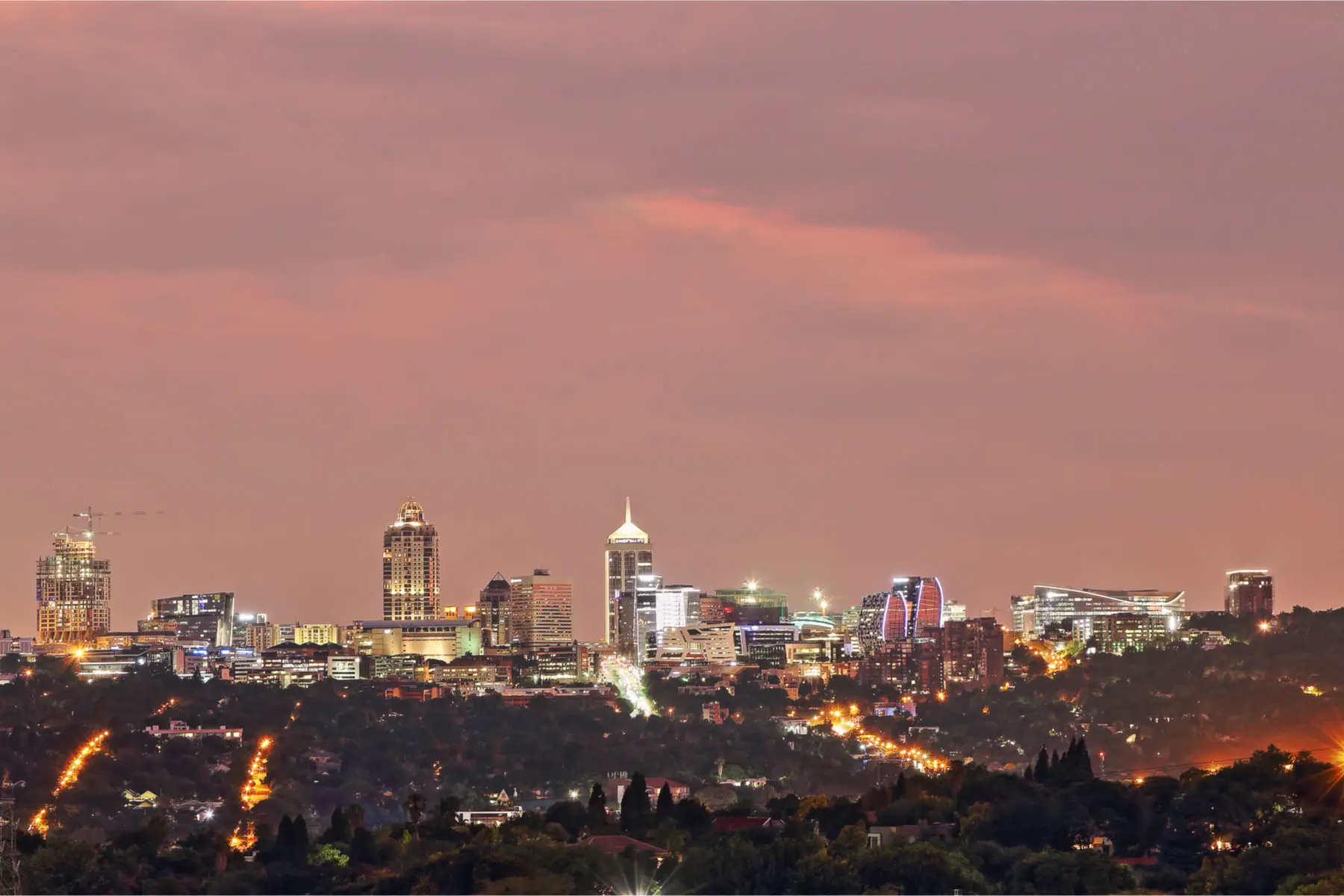
However, Sandton is a perfect example of the duality of South Africa’s unequal society. Reputedly the richest square mile in Africa, it sits right next door to one of the poorest townships, Alexandra.
Popular Sandton suburbs
Suburbs close to Sandton Central include Bryanston, Rivonia, and Morningside. These are new, affluent neighborhoods that bristle with big modern homes. Offering good schools and an easy commute to the office, these areas teem with executives and well-off professionals, locals and expats alike, and their families. These suburbs also have smaller local malls with boutique stores, gyms, and household goods shops. You’ll find millennials staring at laptops and ladies who lunch camping at cafés and coffee shops.
Prices here range from R1,3 million for small Sandton Central flats popular with young executives, to R55 million for a McMansion.
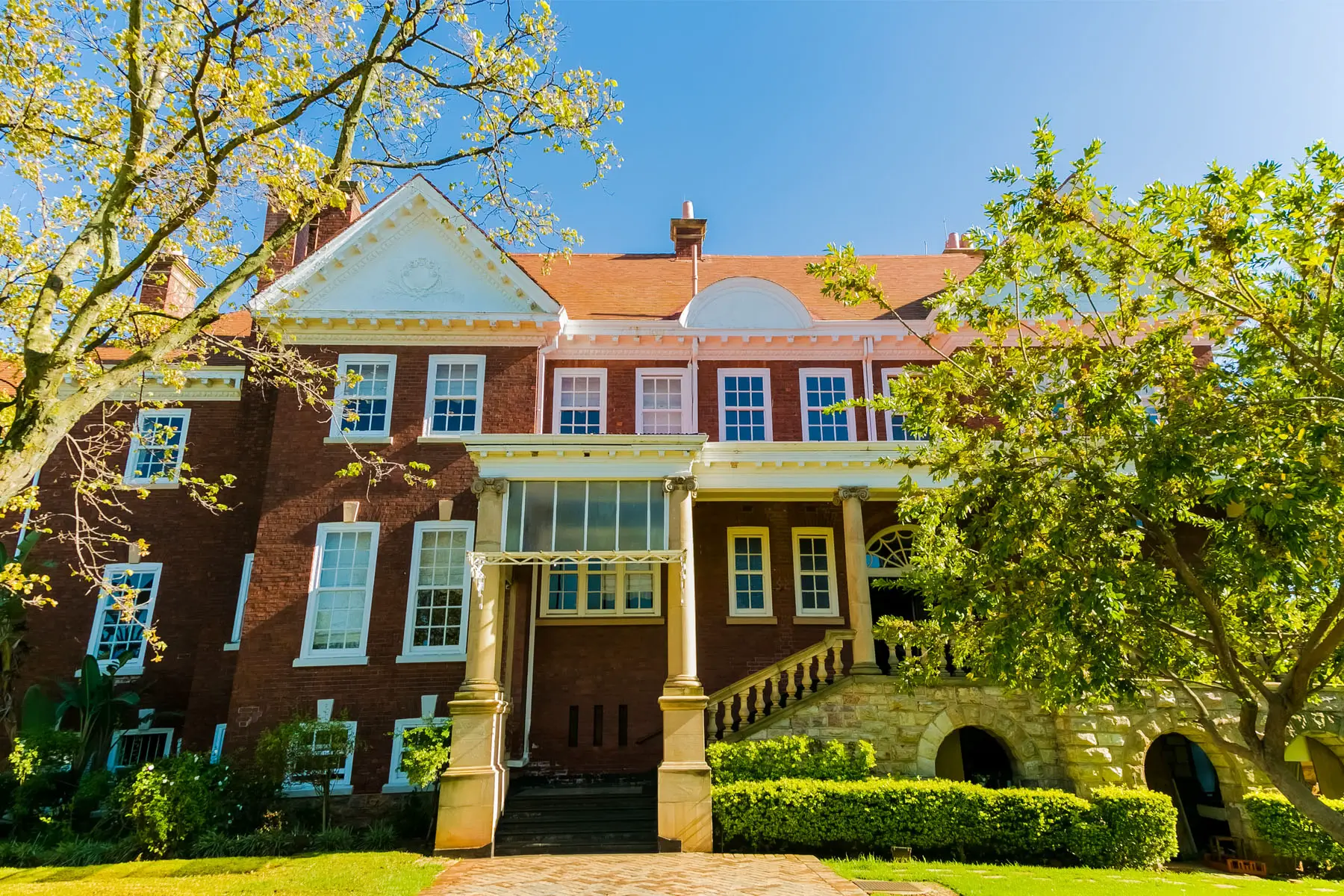
Further north, you will find the popular and family-friendly Sandton suburbs of Fourways, Lonehill, and Broadacres. In 2020, the average cluster home in an estate sold for R3,3 million and a free-standing house for R3,7 million in these areas.
However, just a little further away is the exclusive Dainfern estate. Prices in Dainfern can rise to the tens of millions for larger homes, but the average sale price is R4 million.
Transport in the Sandton area
Sandton Central offers excellent public transport. Apart from the Gautrain and its bus service, it will soon be linked to the Reya Vaya bus network. Ride-hailing services like Uber and tuk-tuks for short hops are popular alternatives.
Sandton Central’s streets and pavements are said to cater to pedestrians and cyclists. However, it is a heavily congested area. If you choose to live further out in Fourways, Lonehill, or Dainfern, it will take a 20-30 minute drive to the nearest Gautrain station.
Facilities in the Sandton area
In keeping with its status, you will find a plethora of golf courses in this area. Apart from one of the largest shopping complexes in the southern hemisphere, there is the Wanderers Cricket ground and the many parks and open spaces, tennis, bowls, and hockey clubs around Sandton. Estates like Dainfern have golf courses and clubhouses with restaurants and bars.
The Rosebank area of Johannesburg
Like Sandton, the Rosebank area has mushroomed with the arrival of a Gautrain station. Along with new headquarters for banks, the area is home to multinationals, law firms, and media houses. Rosebank is a leading entertainment area too, with popular bars and nightclubs, the Keyes Art Mile, and restaurants like the famed Marble. The area has lively open-air recreational spaces, and is home to some of the trendiest neighborhoods, like Parkhurst, Melville, and Greenside. Their streets are lined with hip eateries, boutique shops, ice-cream parlors, and antique stores.

There are a variety of apartments in Rosebank, at various price points. While there are some high-density pockets in the sought-after neighboring suburbs, they tend to feature stately older homes with large grounds. Collectively all the suburbs fall inside the Johannesburg North area, which also includes bits of Sandton. However, South Africa’s older suburbs are fairly small and the borders between them can be blurry. The Johannesburg North area, with Rosebank at its heart, boasts Zoo Lake, 44 Stanley, Arts on Main, the Maboneng precinct and Parkhurst’s ever-popular main street, 4th Avenue.
Popular older suburbs of Johannesburg
Clustered together north of downtown Johannesburg and between the newer hubs of Rosebank and Sandton are some of the city’s oldest neighborhoods. You can live in Nelson Mandela’s former neighborhood, Houghton. Keep in mind that prices here are high, its most expensive street has an average house value of R13.2 million. Do you want something a bit more bohemian? Then look at a neighborhood like Melville and its surroundings.
You will find smaller older homes in the suburb established in 1896, with wood floors and pressed steel ceilings, and prices ranging between R1.3 million and R3.2 million.

Melville is a good place for al fresco dining, with a lively main street filled with great eateries, bars, second-hand shops, and music venues. The charm and affordability of this neighborhood make it attractive to journalists and other creative types. Its main street lends its name to a popular local soapie, 7de Laan.
Westcliff
Traditionally home to Joburg’s old money. Think mining barons, insurance tycoons, and their heirs. Many of the historic properties are Sir Herbert Baker-designed homes like Glenshiel. The suburb is also home to the grand dame of Johannesburg hotels, The Westcliff. Set high on a promontory, the hotel and its neighbors benefit from panoramic views of the greenbelt area of the Johannesburg Zoo and beyond.

Prices? They are usually on application, but a home could cost anything between R10 million and R23 million or more. In fact, the average value of a home on Woolston Road in Westcliff is R13.7 million. There’s not much in the way of entertainment in Westcliff itself. When not entertaining at home, residents here tend to trickle down to the suburbs below them for dinner and drinks. This brings us to some of Joburg’s best suburbs that are far cheaper.
The Parks
Parktown North, Parkview, and Parkhurst are three suburbs a stone’s throw from Westcliff. They are extremely popular for their village vibe and trendy street cafés. Apart from being located close to all the major hubs, these suburbs all fall into the catchment area for very good schools.
While their popularity has seen prices rise, they remain within reach for most upper-middle-income families. The average Parkhurst home sold for R3 million in 2021, Parkview homes average R3,9 million, and Parktown North R4 million. Many expats call these areas home, sometimes permanently. Their popularity has rubbed off on neighboring suburbs.
Hyde Park, Dunkeld, and Saxonwold
These neighboring suburbs are home to well-known, and well-paid, residents ranging from popular broadcasters to the current head of state, President Cyril Ramaphosa. Prices of the stately homes on the best streets reflect this stature. In fact, homes on 4th Road in Hyde Park have an average value of R16,9 million. Which is just slightly more than 1st Road in Dunkeld West at R16,6 million average value.

Saxonwold was established in 1891 and is home to the Joburg Zoo. The suburb’s stately homes sit on land of between 2,000–4,000 square meters. The average price for one of these homes is between R8 million and R12 million. However, do keep in mind that these suburbs also have a variety of cheaper apartments and townhouses. South Africans like to entertain at home. The phrase “entertainer’s dream” is often misused by estate agents, but if you look in Saxonwold, Hyde Park, and Dunkeld you are likely to find homes that live up to that billing.
Having said that, there is a large mall in Hyde Park, with cinemas a hotel and good restaurants, as well as smaller ones dotted through the suburb and neighboring Dunkeld. The locals enjoy good bookstores and plenty of places to brunch.
The Melrose area of Johannesburg
Melrose is situated between Sandton and Rosebank, so it is well-positioned in terms of access to these hubs and their Gautrain stations. It’s walking distance to Wanderer’s Cricket Ground and it is home to Melrose Arch, one of the country’s most popular urban living experiences. It harmoniously marries residential, commercial and leisure spaces so that residents benefit from all the amenities on offer in the development.
As the saying goes, if you build it they will come. And this mixed-use precinct proved to be nectar for the red-bottomed Louboutin brigade. Posing at a sidewalk table with a glass of wine after a shopping spree is a favorite pastime. If you want a taste of the luxury life, a one-bedroom apartment of up to 60 square meters is priced at R2,5 million and rentals start at R14,000 a month. On average, free-standing homes in the suburb sold for R6,2 million in 2020.
Transport in the Rosebank area
All of the above suburbs are close enough to Rosebank and its Gautrain station to make travel a doddle. Bus services like the Gautrain bus and Reya Vaya connect to the main hubs via arterial roads around these suburbs. Ride-hailing services like Uber and meter taxis are among the safest and most convenient ways of getting around town. In Johannesburg, the car is king.
Facilities in the Rosebank area
You can burn off your excesses by going for a hike through the Melville Koppies Nature Reserve. Find peace at a picnic at the Westdene and Emmarentia Dams, wander through the Johannesburg Botanical Gardens, and gawk at the animals at Joburg Zoo. Perhaps enjoy live jazz, boating, and a braai (barbecue) at Zoo Lake.

Dog walkers will enjoy the small but sweet Verity Park and the larger Delta Park nearby. Birders will find the Kelland Bird Sanctuary of particular interest. There are also sports fields, a country club, bowls club, and golf courses.
The Midrand area of Johannesburg
This area is made up mostly of gated communities, from apartments to cluster complexes and estates. The suburbs have little character, and it is difficult to distinguish one from another. However, there are impressive homes in estates like the Waterfall Equestrian Estate, where prices range up to R100 million. Rentals here are up to R150,000 a month. Also in Midrand is Steyn City, named after the billionaire insurance tycoon who built it. Steyn City has an 18 hole Jack Nicklaus-designed golf course and an on-site helicopter. It offers a variety of housing, from one-bedroom apartments to mansions that cost R70 million.
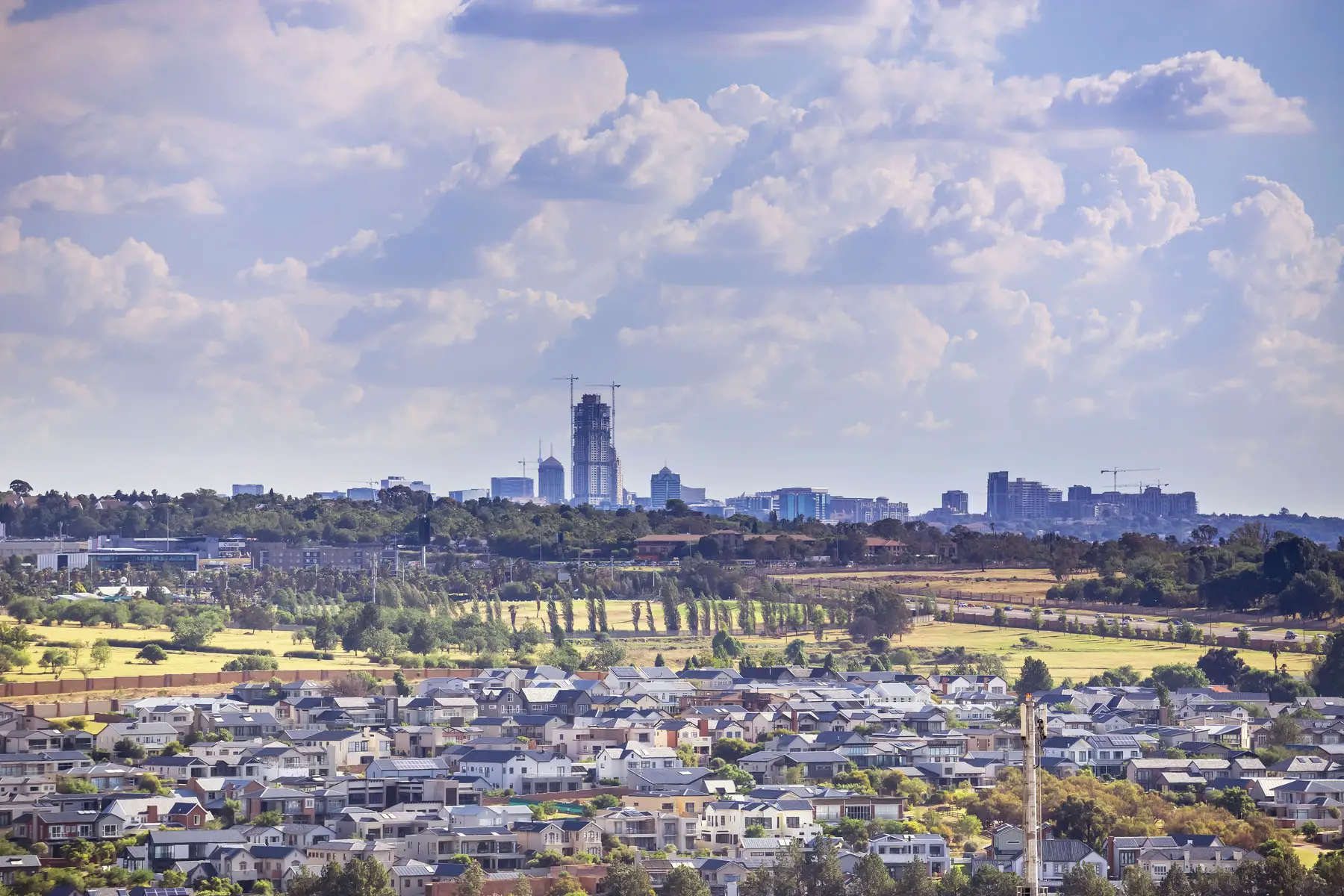
However, there are more affordable housing options in Midrand. It is home to residents who commute via the highways or the Gautrain to Sandton, Rosebank, downtown Johannesburg, and Pretoria. Many people choose to live in Midrand as it offers larger homes to entertain family and friends, and the security of gated communities.
Transport in the Midrand area
Midrand has a Gautrain station and terrible traffic. Many commuters park their cars at the station and catch a train into major hubs like Sandton. Ride-hailing services are also a good bet here.
Facilities in the Midrand area
Aside from the many amenities and facilities found in gated communities, the area is home to South Africa’s largest mall, a Russian orthodox church, a large Turkish mosque, Kyalami Grand Prix Circuit, and a Lion Park.

The Mall of Africa boasts shopping, entertainment, and leisure space of 130,000 square meters.
Neighborhoods to avoid in Johannesburg
While downtown Johannesburg has undergone some attempts at rejuvenation, the area has a high crime rate. Having said that, downtown Johannesburg and neighboring areas like Hillbrow are worth visiting on city walking and food tours.
Areas with high crime rates
The official statistics show these areas have high crime rates:
- Johannesburg central (downtown) – the old CBD and surrounds
- Honeydew – a peri-urban area on the western edge of the metropolis
- Hillbrow – a high-density neighborhood close to the old CBD
- Ivory Park – is a densely populated, impoverished township some distance from the economic hubs of Johannesburg
It is worth noting that business hubs are also targets for opportunistic crimes like bag snatching. Additionally, South Africa’s deep inequality and apartheid past mean well-off areas live alongside economically depressed areas. Always ask a local colleague or friend for guidance and read local news media.
Useful resources
- Joburg – official website of the city of Johannesburg
- Gautrain – this safe, quick, and clean train service is the best way to beat traffic
- Reya Vaya – the city’s bus service aims to expand its network
- joburg.org – for tips on parks, outings, and property
- Joburg in your pocket – for updates on cultural and leisure activities
- Property24 – for updates on average sale prices and trends in areas
